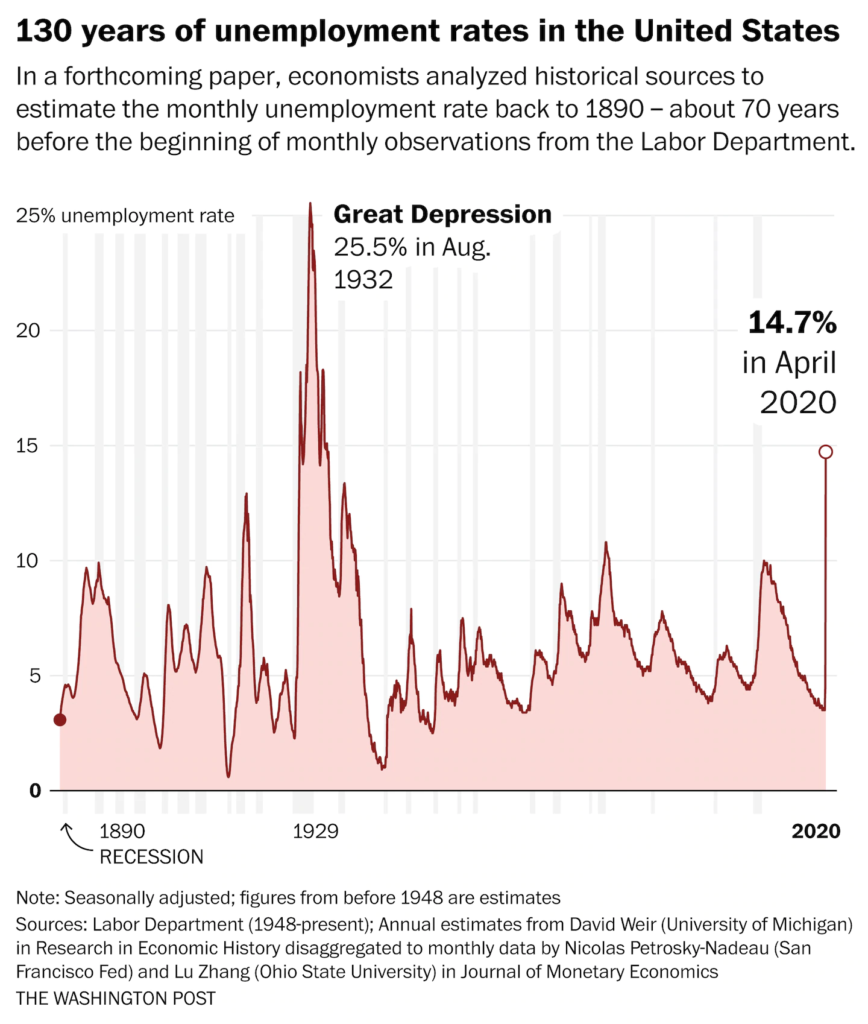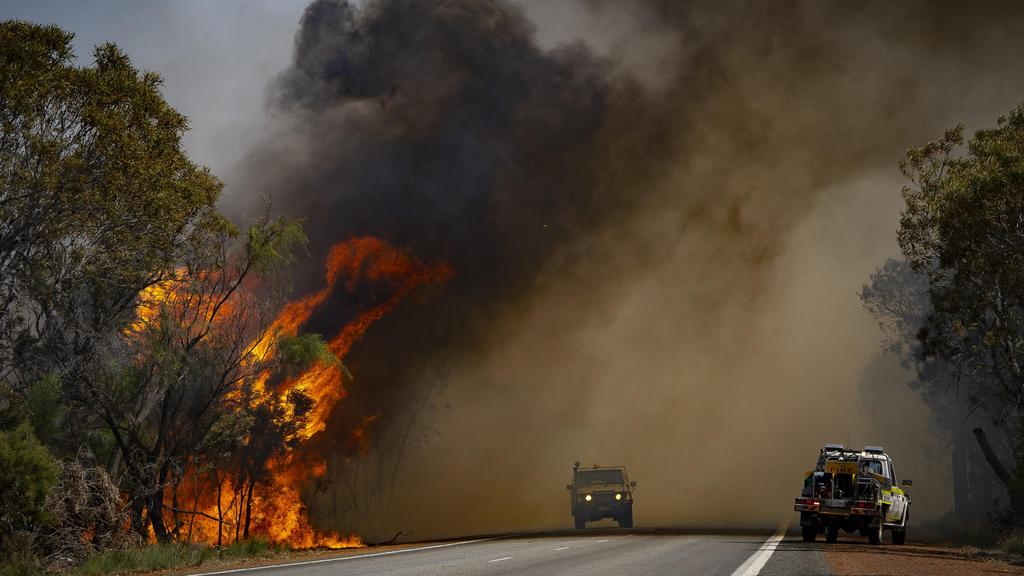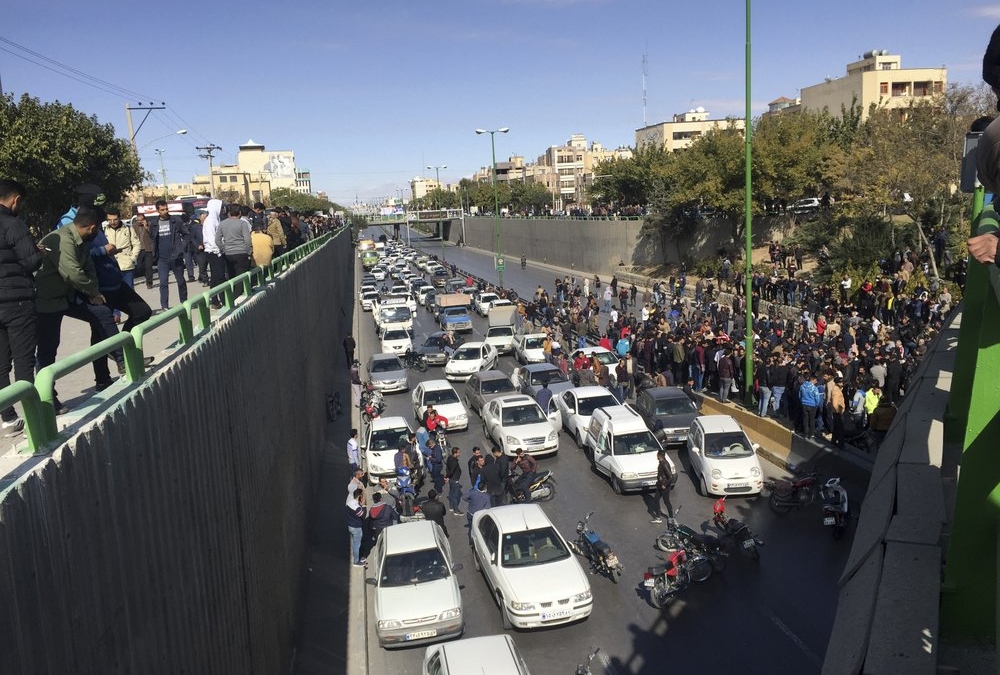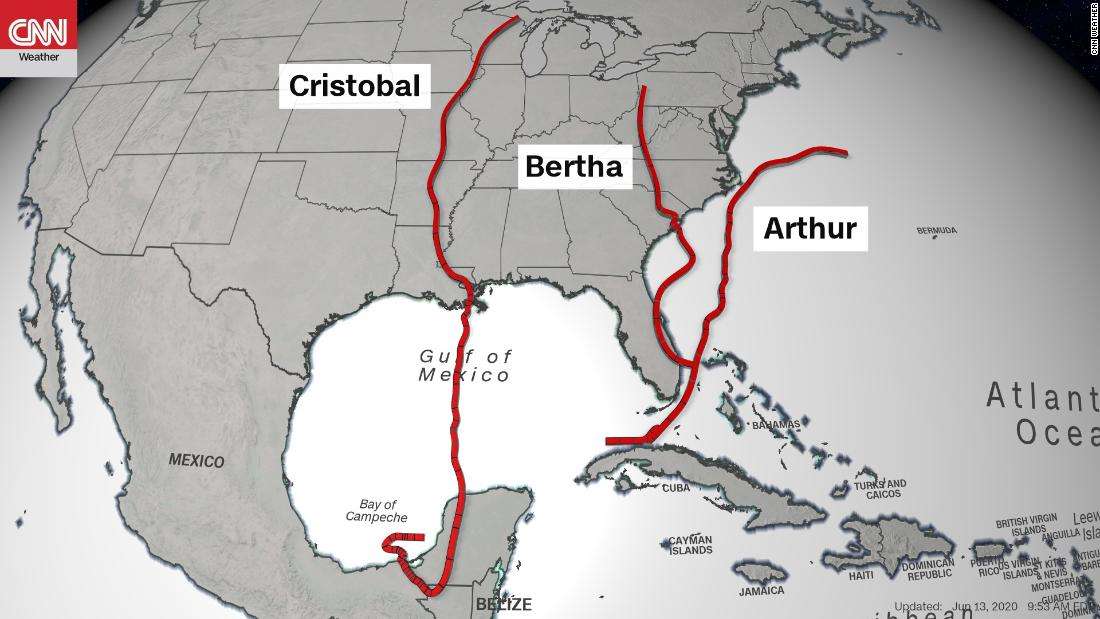U.S. unemployment rate soars to 14.7 percent, the worst since the Great Depression – “This is a catastrophe. When things go over a cliff, they usually they don’t recover quickly.”

By Heather Long
8 May 2020
(The Washington Post) – The U.S. unemployment rate jumped to 14.7 percent in April, the highest level since the Great Depression, as most businesses shut down or severely curtailed operations to fight the deadly coronavirus.
The jobless rate was pushed higher because 20.5 million people lost their jobs last month, the Labor Department said Friday, wiping out a decade of job gains in a single month. The staggering losses are roughly double what the nation experienced during the 2007-09 crisis, which used to be described as the harshest economic contraction most people ever endured. Now that has been quickly dwarfed by the fallout from the global pandemic.
During March and April, Trump and numerous state and local leaders moved to put the economy in a deep freeze in an effort to minimize exposure to the virus. This led businesses to suddenly shed millions of workers at a rapid rate. Analysts warn it could take many years to return to the 3.5 percent unemployment rate the nation experienced in February.

Trump, though, claimed in a Fox News interview Friday that there would be a quick rebound.
“Those jobs will all be back, and they’ll be back very soon,” Trump said. […]
“This is pretty scary,” said Lindsey Piegza, chief economist at Stifel. “I’m fearful many of these jobs are not going to come back and we are going to have an unemployment rate well into 2021 of near 10 percent.” […]
Even though the April unemployment figure was horrific by most accounts, economists say the official government rate almost certainly underestimates the extent of the job losses. The Labor Department said the unemployment rate would have been about 20 percent if workers who said they were absent from work for “other reasons” had been classified as unemployed or furloughed.

What’s clear so far is that Hispanics, African-Americans and low-wage workers in restaurants and retail have been the hardest hit by the job crisis. Many of these workers were already living paycheck-to-paycheck and had the least cushion before the pandemic hit.
“Low-wage workers are experiencing their own Great Depression right now,” said Ahu Yildirmaz, co-head of the ADP Research Institute, which focuses on the job and wage trends.

The unemployment rate in April jumped to a record 18.9 percent for Hispanics, 16.7 percent for African-Americans and 14.2 percent for whites.
Women’s unemployment was nearly three points higher than men’s unemployment, another disparity that largely reflects the prevalence of women in hard hit hospitality and retail jobs. […]
“This is a catastrophe. When things go over a cliff, they usually they don’t recover quickly,” said Danny Blanchflower, an economics professor at Dartmouth. [more]
U.S. unemployment rate soars to 14.7 percent, the worst since the Depression era


